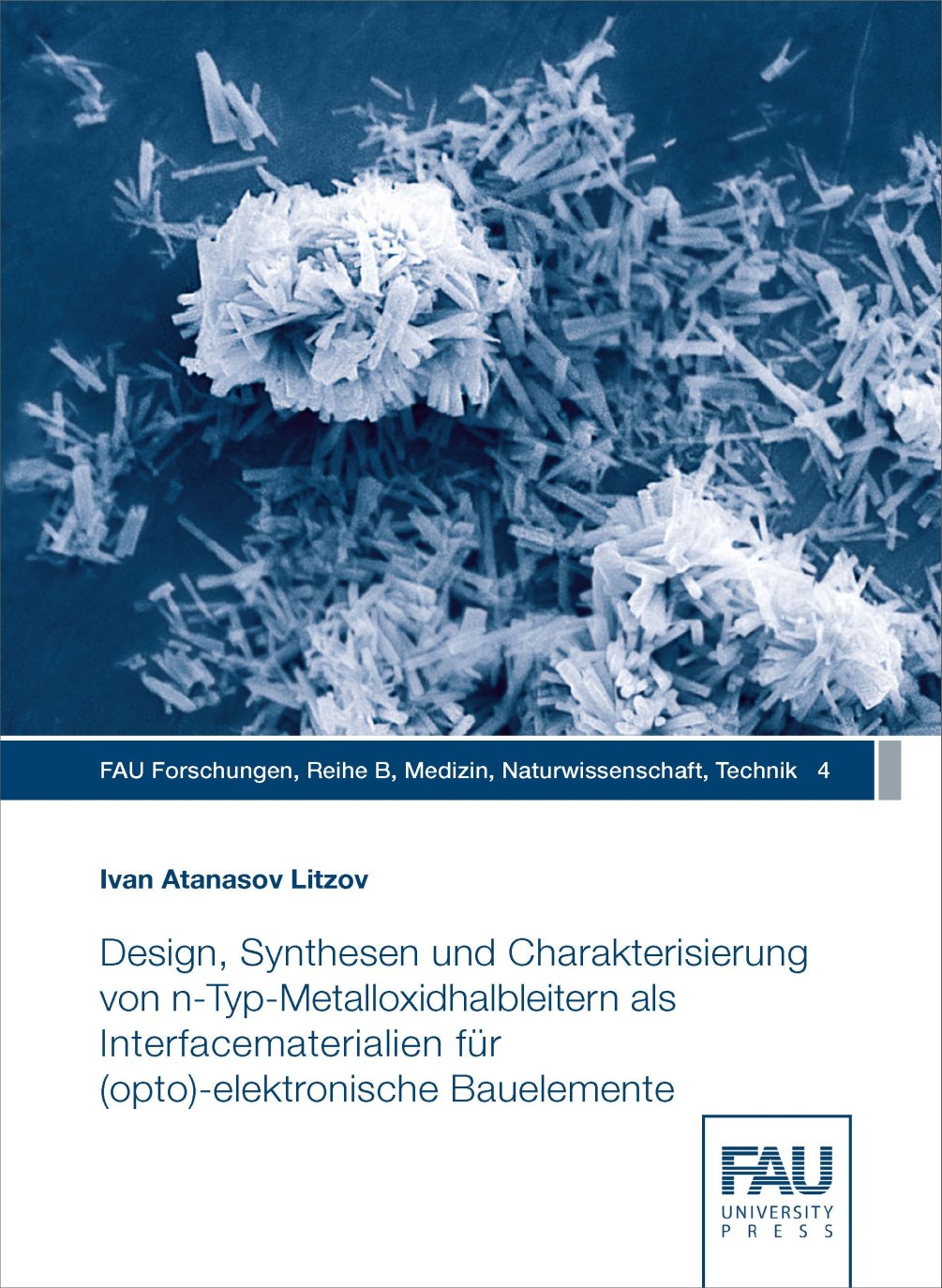Description
Over the past few years, there have been a large number of efforts on wetchemical synthesis of semiconductor metal oxide nanoparticles (MeOxNPs) and metal oxide precursor solutions (sMeOx) due to their decisive role in research and development of new materials and devices. The main goal of the novel synthetic routes is and remains the development of new synthesis strategies and production methods for MeOx NPs and sMeOx allowing one to precisely predict the composition, structure, size and opto‐electronic properties. In this regard in‐depth studies of synthesis and product characterizations are an important step towards more new technological applications.
In the present work various sol‐gel techniques, which should help preparation and processing of undoped and doped n‐type metal oxide semiconductor materials (ZnO NPs, Zn1‐xAlxO NPs, Zn1‐xCoxO NPs, Zn1‐xNixO NPs, Al3+ doped ZnO (sAZO), TiO2 NPs, LixTi1‐xO2 NPs) in the nanometer range, are slightly modified and performed. In order to find and to optimize a simple, cost‐effective, environmentally friendly and efficiently synthetic route the advantages and disadvantages of applied sol‐gel methods are in detail discussed and compared. Additionally, the reaction mechanisms which provide important and in‐depth insights in the formation of synthesized undoped and doped ZnO NPs, TiO2 NPs and sAZO are thoroughly analyzed.
Using a wide range of characterization methods (UV‐Vis spectroscopy, XRD, SEM, TEM, FTIR spectroscopy, PL spectroscopy, Raman spectroscopy) and measurement techniques (Kelvin probe (WF), conductivity (σ)), the structural, morphological and opto‐electronic properties of produced n‐type metal oxide semiconductors (ZnO NPs, Zn1‐xAlxO NPs, Zn1‐xCoxO NPs, Zn1‐xNixO NPs, Al3+ doped ZnO (sAZO), TiO2 NPs, LixTi1‐xO2 NPs) in both bulk and thin transparent films are investigated and tested. The aim of those investigations is to gain sufficient information concerning the integration of synthesized binary metal oxides (ZnO NPs, Zn1‐xAlxO NPs, Zn1‐xCoxO NPs, Zn1‐xNixO NPs, Al3+ doped ZnO (sAZO), TiO2 NPs, LixTi1‐xO2 NPs) as interface materials or as intermediate layers in inverted organic BHJ solar cells (ioBHJ). According to achieved experimental results, the produced interfacial layers via doctor blading based on synthesized n‐type‐metal oxide semiconductor nanomaterials (ZnO NPs, Zn1‐xAlxO NPs, Zn1‐xCoxO NPs, Zn1‐xNixO NPs, Al3+ doped ZnO (sAZO), TiO2 NPs, LixTi1‐xO2 NPs) can satisfy even the most requirements for interface layers. They possess large band gaps (Eg) and the transmission (%T) of all thin transparent films in the visible range is more than ≥ 85%. The differences in the measured work functions (WF) are also not so much. The compared conductivity (σ) values confirmed that selected synthesis method and the applied coating technology can play an important role by producing thin interfacial metal oxide films with suitable physical and chemical properties. A direct comparison of synthesized (ZnO NPs, Zn1‐xAlxO NPs, Zn1‐xCoxO NPs, Zn1‐xNixO NPs, Al3+ doped ZnO (sAZO), TiO2 NPs, LixTi1‐xO2 NPs) as electron extraction layers or electron transport layers in ioBHJ solar cells provides that Al3+ doped ZnO precursor solutions (HT‐AZO or LT‐AZO) are in advantage towards particulate dispersions based on ZnO NPs. They have more compact and dense layers which include relatively good conductivity (σ) and higher transmission (%T). By the variation of their layer thickness no perceptible influence on the performance of ioBHJ solar cells are observed, compared to interfacial layers based on ZnO NPs. In addition, it is determined that TiO2 NPs and LixTi1‐xO2 NPs interface layers allow the construction of reproducible and efficiently ioBHJ solar cells and therefore they prove to be a good alternative for replacement of interface layers based on ZnO NPs. However, development and fabrication of efficient ioBHJ solar cells require intensive stability tests. The most significant studies up to now focus on fundamental degradation mechanisms of organic semiconductors, but not on the degradation behavior of metal oxide interfacial layers (MeOx NPs, sMeOx). In this regard, the effect of temperature, adsorption of oxygen (O2), diffusion of moisture or moisture vapor and UV‐light on the optical and electrical properties of metal oxide thin films (HT‐AZO or LT‐AZO) by applying damp heat test and UV radiation test were investigated and correlated to device degradation. The achieved experimental results show that the optical properties like transmittance (%T) and band gap (Eg) are not influenced by damp heat test and UV radiation test. It is recognized that the electrical properties of both HT‐ and LT‐AZO thin films, i.e. work function (WF) and conductivity (σ) showed evident degradation upon damp heat exposure indicating the strong interaction between the metal oxide surface and the ambient conditions leading to the formation of a depletion layer. Accelerated device degradation under damp heat testing underlines the formation of a barrier or depletion layer at the interface, reducing VOC, JSC, and FF.


Reviews
There are no reviews yet.